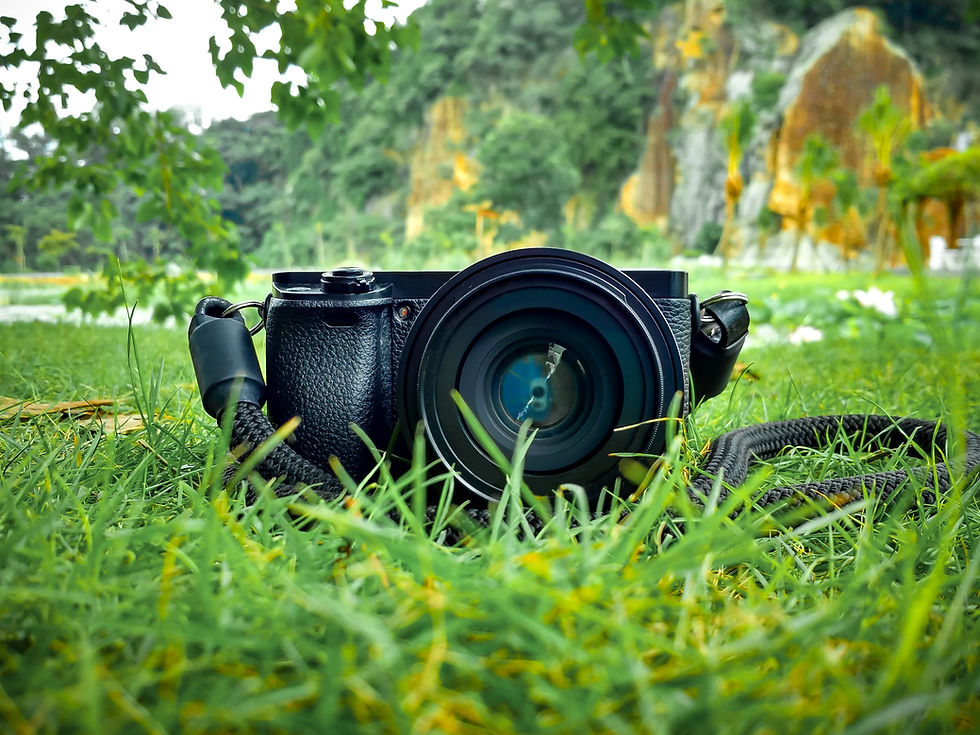A Beginner’s Guide to Editing Photos Like a Pro
- SIGMA Photo
- Aug 28
- 3 min read

Photography doesn’t end when you press the shutter button. In fact, editing is one of the most powerful tools that can transform an ordinary photo into a professional-looking masterpiece. With the right techniques and tools, even beginners can enhance colors, adjust lighting, and refine details to achieve results that stand out. This beginner’s guide will walk you through essential steps, tips, and tools to edit photos like a pro in 2025.
Why Photo Editing Matters
Editing allows photographers to tell a more compelling story by improving composition, correcting exposure, and emphasizing the subject. While good gear such as Sigma lenses can give you sharp and high-quality images, post-processing ensures the final image reflects your creative vision. Professional-looking photos often require both technical skill behind the camera and thoughtful editing afterward.
Choosing the Right Editing Software
The first step to photo editing is selecting the right software. Beginners often feel overwhelmed by the choices available, but a few programs dominate the industry. Adobe Lightroom and Photoshop remain the top tools for professional photographers due to their advanced features and flexibility. For those starting out, simpler tools like Snapseed or Luminar Neo provide user-friendly interfaces without sacrificing essential features.
Understanding Basic Adjustments
Before diving into advanced edits, beginners should master basic adjustments. These foundational tools make the biggest impact on your photos:
Exposure and Brightness: Balancing light and shadows ensures the photo looks natural.
Contrast: Enhancing contrast brings out depth and makes the subject stand out.
White Balance: Correcting temperature and tint helps colors appear accurate.
Cropping and Straightening: Adjusting composition improves framing and balance.
These small edits can dramatically improve a photo without overwhelming new editors.
Enhancing Colors for Impact
Colors play a major role in the mood and emotion of a photograph. Editing software allows you to fine-tune colors to make your photos more appealing. Saturation and vibrance tools enhance colors without making them appear unnatural. Selective color adjustments let you highlight specific tones—for example, enhancing the blue of a sky or the green in landscapes—while keeping skin tones natural.
Sharpening and Detail Enhancement
Even with high-quality lenses, sharpening in post-processing helps define textures and edges. Beginners should be careful not to over-sharpen, as this can create unwanted noise. Most editing programs have sliders that allow subtle adjustments to maintain a professional balance. Using a reliable lens also helps; for instance, when looking at the sigma 35mm 1.4 price in pakistan, it’s clear that good optics combined with proper sharpening techniques result in superior image quality.
Retouching for Polished Results
Retouching involves cleaning up distractions such as blemishes, dust spots, or unwanted objects in the background. Tools like the healing brush in Photoshop make it easy for beginners to refine portraits or landscapes. The key is subtlety—retouching should improve the image without making it look unnatural or overly edited.
Using Presets and Filters
Presets and filters are an excellent way for beginners to achieve a professional look quickly. Many editing programs offer built-in presets, while others can be downloaded or purchased from professionals. While presets are helpful, they should be treated as starting points. Adjusting them to suit your specific photo ensures a more authentic result.
Advanced Edits to Explore
Once you are comfortable with the basics, you can explore advanced editing techniques:
Layer Masking: Allows selective edits to specific parts of the image.
HDR Blending: Combines multiple exposures for balanced highlights and shadows.
Dodging and Burning: Enhances depth by lightening or darkening selective areas.
Color Grading: Adds cinematic tones that give your images a unique style.
These techniques may take time to master but can significantly elevate your work.
Staying True to Your Style
One of the most important parts of photo editing is developing a consistent style. Beginners often experiment with different looks, but over time, your editing style will reflect your personal vision. Whether you prefer bright and colorful edits or moody and cinematic tones, consistency helps build a recognizable identity as a photographer.
Common Mistakes to Avoid
Many beginners over-edit their photos. Oversaturation, heavy filters, or excessive retouching can make images look unnatural. Another mistake is ignoring the importance of shooting in RAW format. RAW files retain more data than JPEGs, making editing easier and more flexible. Always remember, the best edits enhance the photo without distracting from the subject.
Conclusion
Editing photos like a pro takes practice, patience, and the right tools. By mastering basic adjustments, learning color control, and gradually experimenting with advanced techniques, beginners can create professional-quality images. Combining strong photography skills with thoughtful editing ensures your photos stand out in today’s visually competitive world. With consistent practice, you’ll develop a unique style that reflects your creative vision and sets your work apart.







Comments